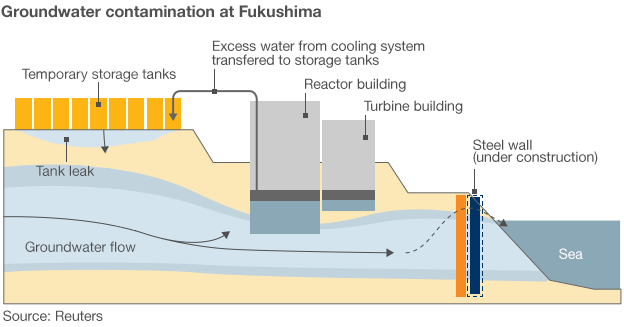Sea dump, ice wall proposed as Fukushima spikes
Over $500 million will be spent in ongoing efforts to fix the continuous stream of irradiated water flowing around the ruined Fukushima Daiichi Nuclear reactor, the announcement of the funding has preceded the largest recorded spike in radiation levels since the disaster.
Japanese authorities have made the pledge this week to spend-up on the problem, which has gone largely under the global radar since the earthquake in 2011.
The timely announcement came just hours before reports that readings at the plant showed radiation as high as 2,200 millisieverts (mSv), the Nuclear Regulation Authority said, up from 1,800 mSv at the weekend. Exposure to radiation of that level is enough to kill an unprotected person within hours.
Several plans have been proposed which may see the TEPCO nuclear authority take active steps to solve the problem they have been trying to contain for so long. One idea would see some of over 300,000 tonnes of contaminated water dumped into the ocean.
Shinichi Tanaka from the Nuclear Regulation Authority, said: “Fukushima Daiichi has various risks. The accident has yet to be settled down... I'm afraid that it is unavoidable to dump or release the water into the sea.”
The Japanese government has announced a somewhat more refined plan - hoping to use coolant-filled pipes buried around the reactor site to freeze the earth into an underground wall of ice.
The technique has been used successfully on small chemical spills before, but never with a radioactive leak of this magnitude.
Recent satellite imagery has shown the vast expanse of contaminated water storage tanks that have accumulated on the site since 2011, with Japanese authorities finally beginning to admit the situation is well out of hand and requires drastic and decisive measures to recover.
Japanese Prime Minister Shinzo Abe says: “The world is closely watching whether we can dismantle the [Fukushima] plant, including the issue of contaminated water... the government is determined to work hard to resolve the issue.”








 Print
Print